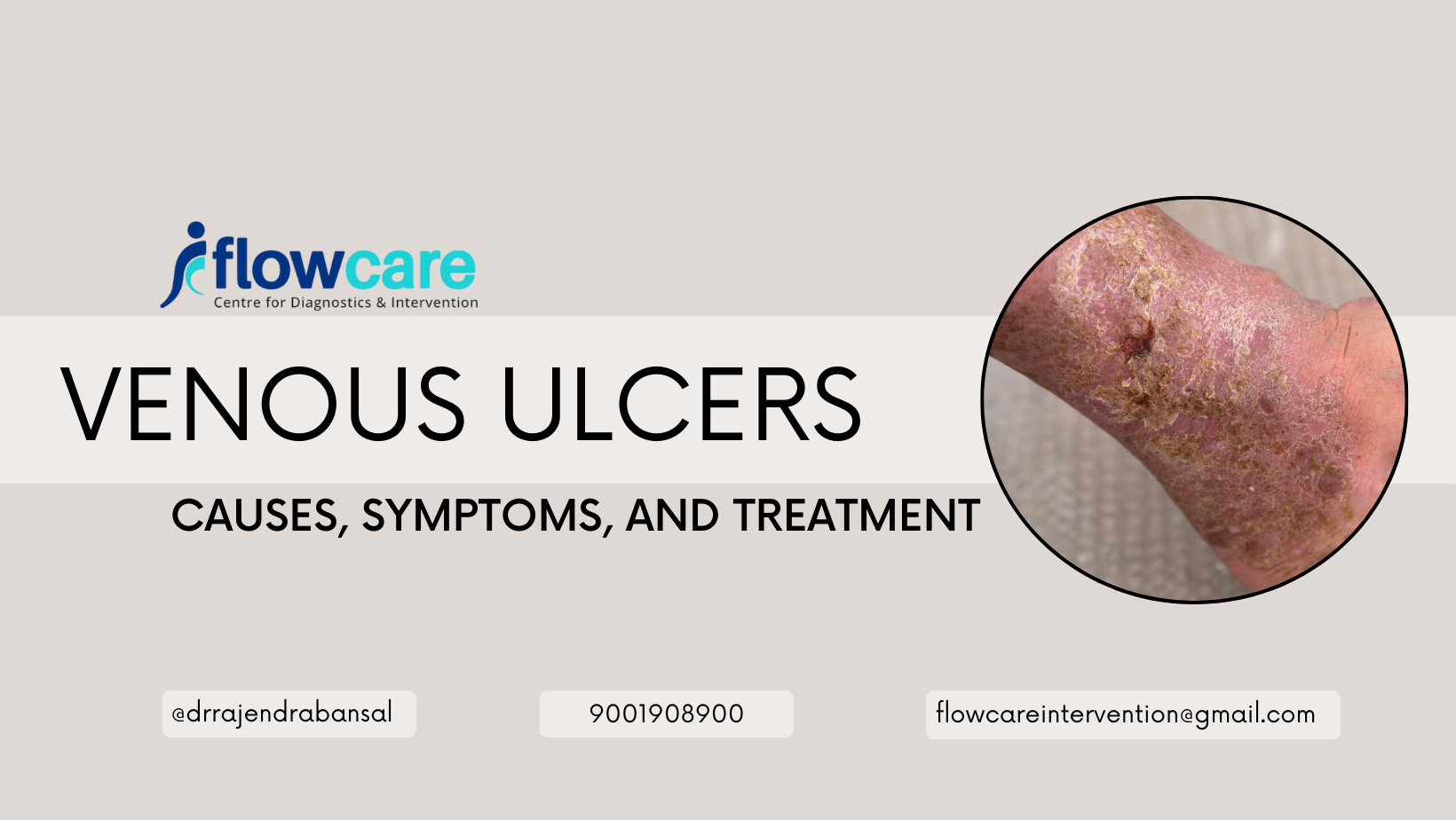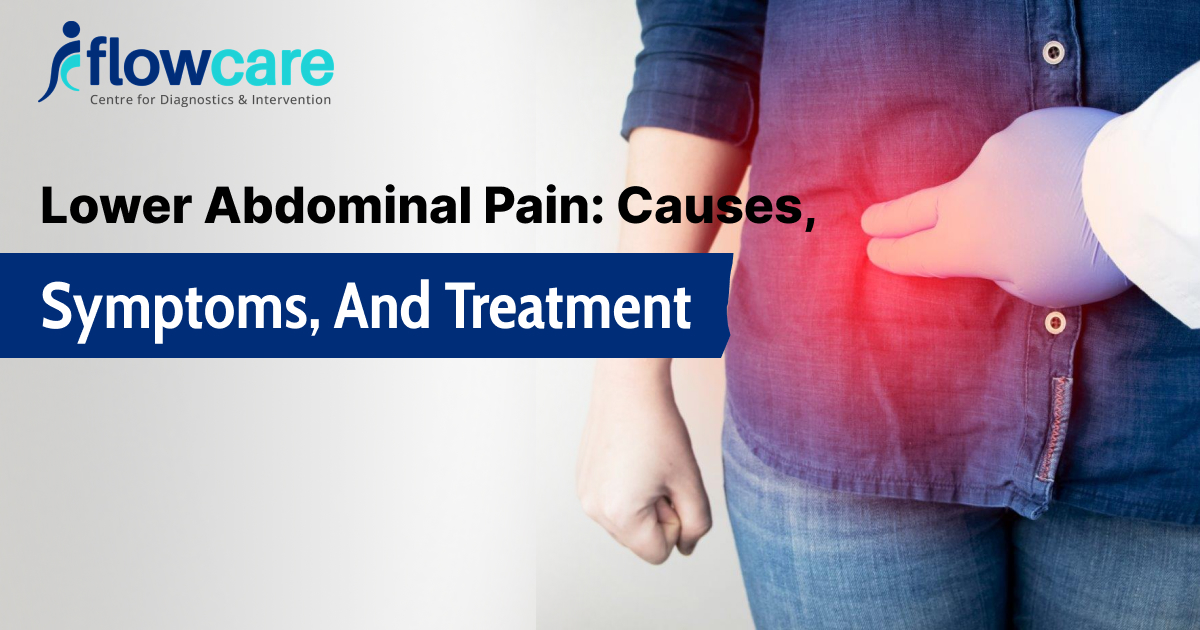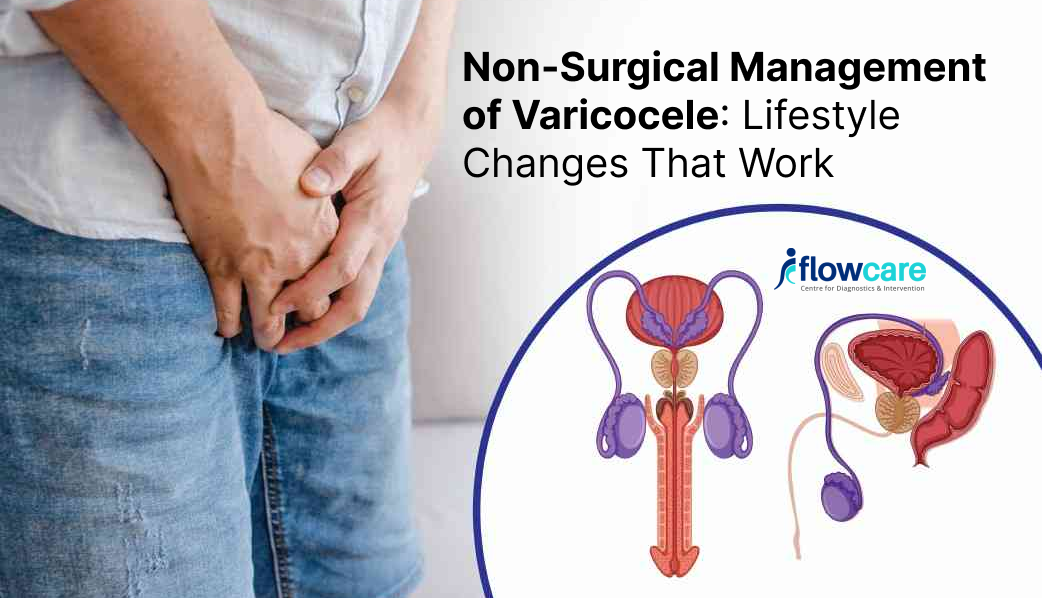
Understanding Venous Ulcers: Causes, Symptoms, and Treatment Options with Expert Advice by Dr. Rajendra Bansal
Venous ulcers, often regarded as one of the most overlooked conditions yet causes physical and mental discomfort. The venous ulcers can cause mild pain and are the result of chronic veins insufficiency. They can affect the quality of life for a longer time.
These ulcers usually appear on the medial aspect of the legs and can take a long time to heal. There are multiple reasons behind the appearance of venous ulcers. Understanding what causes these ulcers, recognizing the symptoms, and knowledge of available treatment options are important steps in managing this condition. To help our users in finding the best, we have curated a brief description of causes, symptoms and treatment options.
What are Venous Ulcers?
Venous ulcers are open sores that develop when venous pressure is high around the ankle region either due to blockage in the venous system or defect in valves of the vein. The consistent pressure causes blood to pool in your legs, increasing pressure and leading to varicosities, edema, and itching. In case when people ignore them then veins burst and transform into open sores as ulcers.
Causes of Venous Ulcers
The occurrence of venous ulcers could happen due to several factors.
There are different factors that can contribute to occurrence of venous ulcers;
- Chronic Venous Insufficiency (CVI): This reason tops the list of causes of ulcers. CVI happens when the valves in your leg veins don’t work well, making it hard for blood to flow back to your heart.
- Deep Vein Thrombosis (DVT): Blood clots in your legs’ deep veins might harm them and cause CVI.
- Varicose Veins: These swollen, twisted veins can cause blood to pool in your legs, increasing pressure and leading to ulcers.
Risk Factors
A hectic lifestyle that includes prolonged standing, sitting and running creates extra pressure on the venous system and leads to increment in venous pressure knows as venous hypertension
Obesity: Excess weight puts additional strain on your legs’ veins.
Pregnancy: This condition increases pressure in veins, but hormonal changes might compromise vein walls and valves.
Inactivity: Sitting or standing for extended periods can impede blood flow and cause venous hypertension.

Symptoms of Venous Ulcers
The signs and symptoms of venous ulcers can be noticed at an early stage. Let’s give a look at the symptoms that a person could identify if they have ulcers or not.
- Swelling in the Legs: Persistent swelling, especially around the ankles, can be an early sign.
- Itching and Tingling: You might feel itching or tingling around the area where an ulcer will form.
- Discoloration: The skin around the ulcer might turn brown or red due to poor blood flow.
- Pain: Venous ulcers can be painful, especially when you stand or walk.
- Wounds that Don’t Heal: Open sores or wounds that take a long time to heal or don’t heal at all can indicate a venous ulcer.
- Hardened Skin: The skin around the ulcer might become hard or leathery.
Treatment Options
Treating venous ulcers includes treating the underlying cause and caring for the wound. This list includes a few of the symptoms which you should look for:
- Compression Therapy: Wearing compression stockings improves blood flow in the legs and minimises oedema. Doctors frequently suggest this as the first course of therapy.
- Elevation: Elevating your legs above your heart level many times each day will help decrease oedema and increase blood flow.
- Wound Care: The ulcer must be cared for properly. This includes cleansing the area, providing dressings, and occasionally administering specific drugs to encourage recovery.
- Medications: Doctors might prescribe medications to improve blood flow or treat infections.
- Surgery: In some cases where the condition worsens, removal of the ulcer along with minimally invasive treatment like laser ablation, vaginoplasty or foam sclerotherapy may be offered for better healing.
- Lifestyle Changes: Maintaining a healthy weight, exercising frequently, and avoiding lengthy periods of standing or sitting can all help treat venous ulcers and keep them from recurring.
Expert Advice
Experts like Dr. Rajendra Bansal emphasise the significance of early diagnosis and therapy. The sooner you discover and treat venous ulcers, the greater your chances of recovery. Educating oneself about the causes and symptoms allows you to take proactive measures to control the disease. If you are the one who is also suffering from the ulcers then the expertise and guidance of Dr. Rajendra Bansal would help you a lot throughout the treatment. At Flowcare, you will get all services under one roof which eliminates the long procedure and time consumption.
Conclusion
Venous ulcers are a challenging illness, but with the right care and treatment, they may be properly managed. Understanding the reasons, identifying the symptoms, and following the advice of healthcare experts can help you improve your quality of life and decrease the risk of consequences. If you feel you have a venous ulcer, speak with your doctor about a correct diagnosis and treatment plan.






